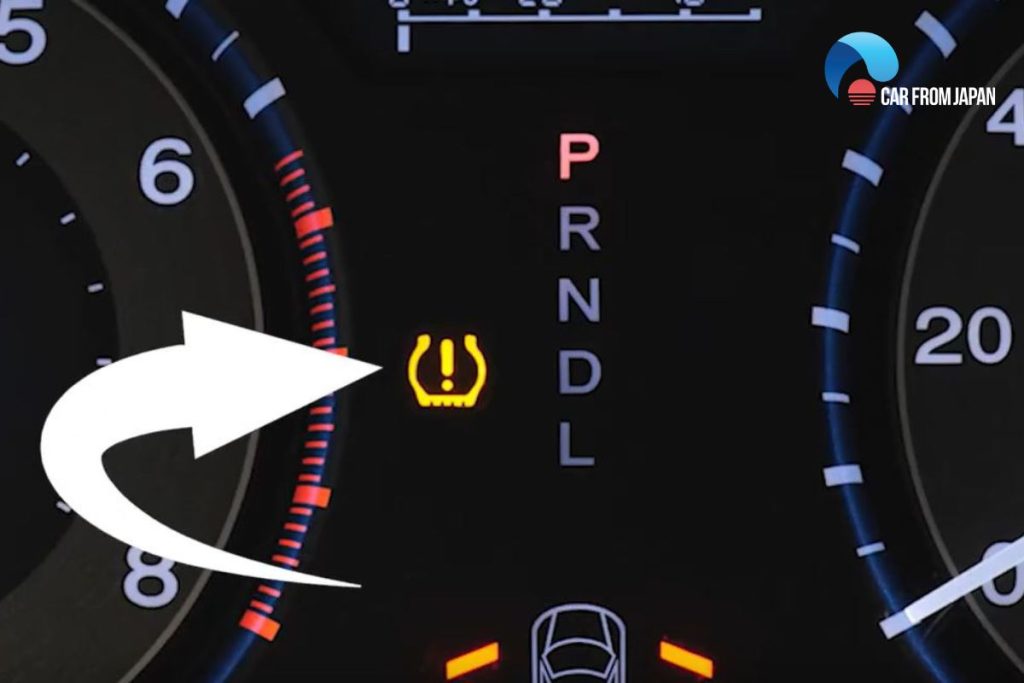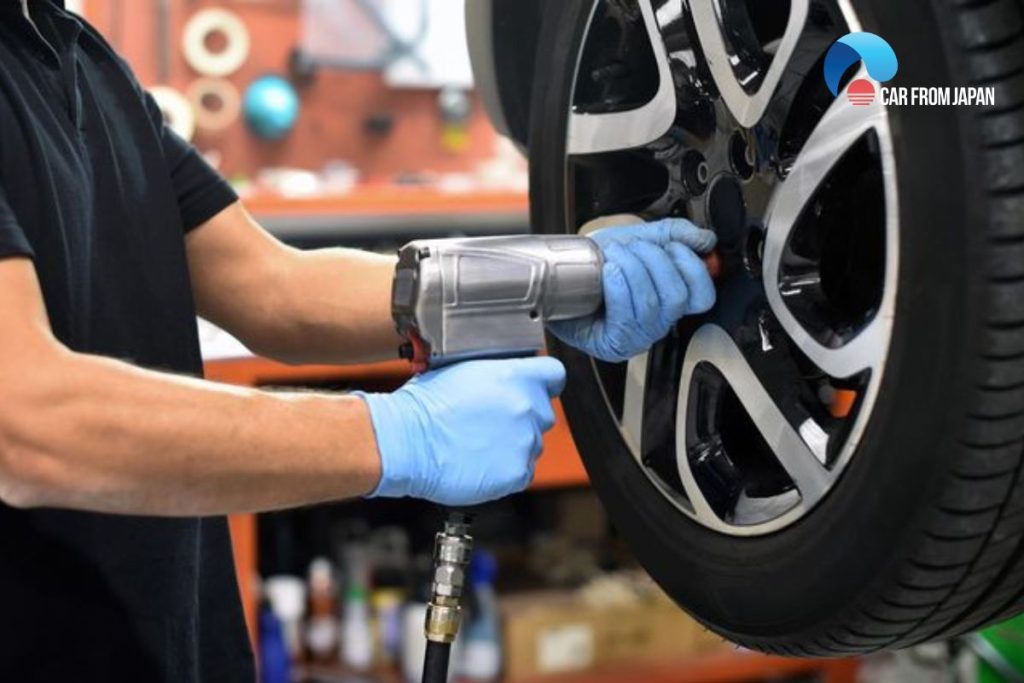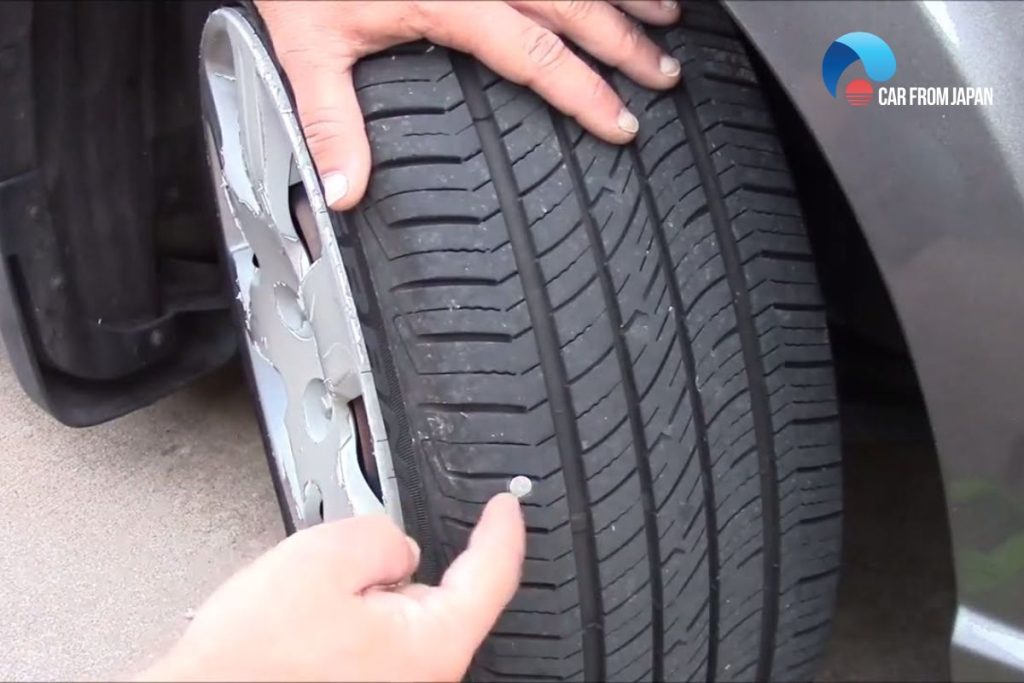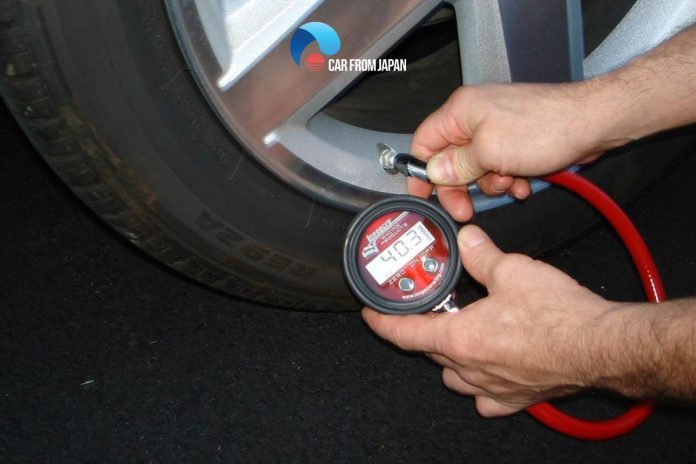To ensure optimum stability, control, handling, and braking performance, your car tires must be consistently inflated to the optimum air pressure specified by your vehicle manufacturer.
However, there’s a common problem of seeing on dashboard a low tire pressure light but tires are fine. So what is the reason for this problem and how to fix it? Read on to find out with Car From Japan!
Contents
- Tire Pressure Monitoring System: What Does It Do?
- Reasons Behind Low Tire Pressure Light but Tires are Fine Issue
- How To Fix a Low Tire Pressure Light but Tires are Fine?
- FAQs on Low Tire Pressure and Tire Pressure Monitoring System
- Can driving at high speeds or long distances trigger a false low tire pressure warning?
- How can I reset the low tire pressure warning light without using a TPMS tool?
- Does using nitrogen instead of regular air affect TPMS readings?
- Is it safe to ignore the tire pressure light if my tires appear fine?
- How long do TPMS sensors last before they need to be replaced?
Tire Pressure Monitoring System: What Does It Do?
Before delving into the reasons for the problem of tire pressure light keeps coming on and its solutions, you must first understand the basics of the technology measuring the tire pressure.
Most new vehicles today come with a TPMS, which stands for Tire Pressure Monitoring System. A TPMS is an electronic box fitted on the rim of the tire that generates tire pressure information for the car’s computer system.
When a tire’s pressure is significantly lower than the recommended amount, the TPMS will illuminate a light on the dashboard. However, it does not allow you to check the exact pressure.
So just because the warning light isn’t on doesn’t mean your tire pressure is optimized. Additionally, older vehicles may not have a TPMS installed.
There are two types of TPMS with their own pros and cons.
- Direct TPMS systems use sensors inside each tire to measure the pressure directly.
- Indirect TPMS systems use the wheel speed sensors to calculate the pressure indirectly.
When the car starts, the TPMS light will normally illuminate for a second or two to indicate that the system is working. The light may look like a tire with an exclamation point inside it, or it may simply say “TPMS”.

If a tire has low pressure, the dashboard TPMS light will illuminate. It may flash or stay on for long periods.
So what makes the TPMS light on but tires are fine?
Reasons Behind Low Tire Pressure Light but Tires are Fine Issue
Many times when the tires aren’t flat or under-inflated, the low-pressure light on the dashboard turns on. There are many possible reasons behind this issue.
Extreme cold weather
It is pretty common for the low tire pressure light but tires are a fine issue to occur on very cold winter mornings. Hot air expands, takes up more space, and is less dense, but inside the confined space of a tire, this expansion means increased air pressure.
In contrast, cold air becomes dense and takes up less space, decreasing air pressure. A tire properly inflated to 30 PSI on a warm day might register as low as 25 PSI on a frigid morning.
On days with substantial fluctuation in temperature, say around 40 to 50 degrees F between day and night, your tire pressure might vary by about 3 PSI to 5 PSI.
This is why it’s pretty normal if on a cold winter morning, you find the low-pressure indicator light on your dashboard. But once you start driving, the tires will warm up.
The air inside the tire will expand, thus increasing the air pressure and the light will shut off. So you see the low tire pressure light but the tires are fine.
However, if the light doesn’t turn off after the tires are warmed up, you should grab your tire pressure gauge to measure the exact pressure and inflate them to the optimum pressure level.
Recent tire rotation or replacement
A recent tire rotation or replacement can sometimes trigger a tire pressure monitoring system (TPMS) warning light even when the tire is actually fine.
Because the TPMS sensors are located on the wheel rims, they can be inadvertently damaged during tire service.
Another potential issue is using replacement tires that lack TPMS sensors or have incompatible sensors. This mismatch forces the vehicle’s TPMS system into a relearning process, often illuminating the warning light.
In this case, all it requires to turn off the light is taking your vehicle for a casual drive at a constant speed for 10 minutes or so. If this does not resolve the issue, you need to take your car to a mechanic for an external recalibration.

Malfunctioning TPMS sensor
If your tire pressure light stays on despite confirming proper inflation with a gauge, a malfunctioning tire pressure monitoring system sensor is likely the culprit. In this case, it’s best to consult a mechanic to inspect and possibly replace the TPMS.
Physical sensors are prone to wear and tear over time, particularly to the gaskets, seals, valve caps, or core of the sensor. These sensors also run on onboard batteries, which have a limited lifespan of about 5 to 7 years (up to 10 years in the best cases).
Low battery power and age-related wear and tear can cause the TPMS sensor to malfunction and trigger the low tire pressure light.
Additionally, using sealants to repair flat tires can sometimes interfere with sensor function.
Forgotten spare tire
If you recently changed your tire and used your spare one, it might be the reason for a tire pressure warning. Spare tires often sit unused for long periods and can lose air pressure gradually.
While not all spares have TPMS sensors, those that do can trigger the low-pressure light if underinflated. And note that even with a valve cap, tires naturally lose air over time through the valve itself.
So while it’s recommended that you check your tire pressure at least once a month, it’s always a good idea to check your spare tire PSI as well and inflate it to the optimum pressure to swap in at any time.
Air loss due to physical impacts
Sudden loss of air pressure in tires is pretty common and might cause the TPMS light to turn on although you just inflated your tires properly a few days ago.
Loss of pressure is likely caused by driving on rough terrains or bumping up against a curb, which can cause the seal between the tire and the wheel rim to separate momentarily, thus letting a small amount of air leak through.
Other common reasons for air leakage which can turn on the low tire pressure light include damage to the wheel rim due to physical shocks like flying pebbles or debris, or a faulty tire valve that bleeds air gradually.

How To Fix a Low Tire Pressure Light but Tires are Fine?
Now, that we’re well informed about the causes this issue, let’s tackle this problem.
You have the choice of resetting the TPMS yourself or seeking help from a professional. But be aware that by law, any auto shop must resolve the issue before they let you drive away.
So in the rare case that the troubleshooting and fixing are more time-consuming than expected, your car will be held hostage until the problem is fixed.
If you seek a way to self-deal with this problem, here are some short recommendations you can take for reference.
Positioned inside the glove box (a compartment inside the dashboard), you can easily find it in front of the passenger’s seat. In case, you can’t locate it, find the button with the “SET” marked on it, or else check the car’s manual.
Note: The position of this button may vary according to the brand and the car’s model.
Next, press the located button for 3 seconds. Once the light blinks 3 times on the dashboard, this means the TPMS is reset. After this, turn off the engine and start it again after 5 seconds (from the time the light blinks).
This act may resolve the issue. But it is important to note that the process of resetting the TPMS may vary in accordance with the car model. Therefore, consult your vehicle’s manual before heading for it specifically.
However, if the above solution doesn’t work out for you, take your car to the nearest mechanic for a thorough inspection.
Sometimes you can’t Do It Yourself
Some vehicles like Subarus won’t allow you to reset your TPMS sensors on your own. You’ll need a special tool, which is only available at any auto repair shops, car parts stores, and tire dealerships.
In this case, the TPMS sensor is given a unique ID that needs to be registered with the ECU, alongside data such as pressure information, tire position and temperature at the time.
Once you rotate or replace your tire, one or more of these data will change, which requires the sensor to be recalibrated with special tools.
Check out this video from Silver Cymbal to learn more about why your tire light is ON and how to fix it properly!
FAQs on Low Tire Pressure and Tire Pressure Monitoring System
Can driving at high speeds or long distances trigger a false low tire pressure warning?
Yes, lengthened high-speed driving can cause the tires to heat up and slightly expand, affecting pressure readings and causing pressure light.
If the Tire Pressure Monitoring System system is overly sensitive, it might register this as a fluctuation and trigger the warning light.
How can I reset the low tire pressure warning light without using a TPMS tool?
You can reset the TPMS light by driving at a steady speed (usually above 50 mph) for about 10–15 minutes.
Some models also have a TPMS reset button, typically located under the steering wheel or near the fuse box.
Does using nitrogen instead of regular air affect TPMS readings?
No, Tire Pressure Monitoring System sensors work the same with nitrogen-filled tires.
However, nitrogen expands and contracts less than regular air, which might reduce pressure fluctuations and prevent false alerts in extreme weather.
Is it safe to ignore the tire pressure light if my tires appear fine?
No, you should always check tire pressure with a gauge while it could be a false alert.
How long do TPMS sensors last before they need to be replaced?
Most TPMS sensors may last between 5 to 10 years.
If your car is older and experiencing persistent tire pressure issues, it may be time to replace the sensors.




My issue was the spare tire also had a TPMS sensor (a full sized spare on a 2009 Avalon), so I thought all the tires were ok, but there was a 5th tire to check
I have a 2014 CX-5. My tire pressure monitoring light is always on. When it gets cold out it goes off for a while but it will come back on again when the car warms up. This happens even when the car doesn’t move so it’s not the pressure coming up in the tires due to the tires warming up. It has been going on for a long time and its not related to tire pressure. Could it be a a bad ABS sensor? The tires have no monitoring sensors of their own.
I learned absolutely nothing from five minutes of this video, which was mostly about this guy listening to himself talk about nothing at all useful. That is what the low tire pressure light is for, Ace. It tells us to check the tire pressure and add air if necessary!
It baffles me why people post these U-Tube “solutions”, talk for minutes, and say nothing about solving the problem until the very end, if at all. And like this guy, all he really said in the end was, that there wasn’t a problem because it fixed itself. WOW! Smart Fellow!
The answer we look for here was the situation when the light is on and the tires do NOT need air!
I have a 2007 Tundra…I have replace all TPMS,,replaced the ECM for TPMS and still after a few hours the light comes on..I am so frustrated with this that I am about to just sell this truck. I had a tire place sink 400$ in TPMS Toyota TPMS, and 200$ in labor..and bought a salvage ECM…it worked for a while then came back on. Now they want another 650$ for a brand new ECM from Toyota…it is a 12 year old truck and putting a down payment into a 12 year old truck is insane. Anyone else have this issue.
I have a 2008 BMW x3, and for 2 days now its been showing a low pressure light. I checked the tires, they are all fine. The temperature hasn’t also changed that much.
Ha Ha–no reset button in my subaru outback glove box !